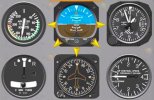I have been in the scenario where I have tried to pick up an IFR clearance to get home, but couldn't. ATC can't give you a clearance until you get to the Minimum Vectoring Altitude. But you can't get up to the MVA because that is in the clouds. Well you can't go IMC without an IFR clearance. Catch-22. Sometimes you can sweet talk the controller and guarantee obstacle clearance up to the MVA, but that is wrong and rare.
That's why you just declare the emergency and take your pain on the backside. At least he was actually up with SOCAL even if they couldn't provide services (according to the audio), so he was already talking to the person he would need to. As Jim and Sam were saying, having the time to make that decision is critical before getting boxed in, and it's easy for us to say it now, but climbing and declaring early would have been a better option.
As an aside... About 2 years ago (-ish), a 407 from my company got caught in IIMC. All of the 407s have instrument capability, so the pilot called ATC and asked for the vectors to the nearest approach and landed uneventfully. The FAA went after the pilot, not because he flew IFR in a VFR-only aircraft, but because he didn't declare the emergency first. The company protected him and talked the FAA off the ledge, but they make sure to put out in new hire that if you ever get in that situation, declare and then you start to gain some get out of jail free cards (from the FAA, at least). Hokie, I know you know that, just finishing the thought.
Having not flown for a civilian helo pax company, does the fact they only do VFR ops imply that their aircraft are not configured for IFR ops? Or is it an insurance thing, or training cost, or inability to keep pilots current?
The answer is: it depends. The S76 is an IFR capable aircraft, but as I said earlier, who knows how this particular one was configured. It's possible to have a non-IFR certified aircraft that's completely capable of flying IFR. There are other aircraft that are fully IFR capable but are a VFR-only program. There are quite a few EC-135 HAA programs like that.
If you are an IFR Part 135 program, you have to maintain instrument currency, so 6 approaches every 6 months. Easy right? Well it's not the military where we can just log what we want, and as an example, in my case, I fly a single-pilot aircraft with only one set of controls. So I can't legally fly a "simulated" approach without a safety pilot. I can't have a safety pilot because there's not a second set of controls. The only way I can legally log an approach is to shoot an actual approach (as defined by the FARs....something something about weather and the FAF...that I can never remember). Sooo, we just do an IPC every 6 months with an instructor/Check Airman (either in the sim or in the aircraft...it alternates) and then we're always current.

